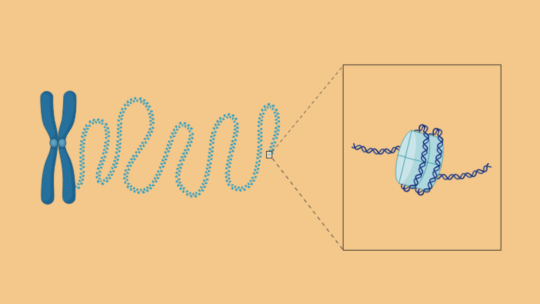Images
Participants






Contact

- A team of researchers at IRB Barcelona have developed an innovative computational model to precisely predict the position of nucleosomes in the genome.
The approach combines machine learning techniques, signal transmission theory, and the physical properties of DNA. - Published in Nucleic Acids Research, this breakthrough opens up new opportunities to study the relationship between nucleosome architecture and gene expression regulation.
DNA—the molecule that carries the genetic information of all living organisms—is packaged within cells in a complex manner that allows it to function efficiently. Nucleosomes facilitate DNA compaction and also play a crucial role in regulating gene expression and other biological processes.
A team of scientists led by Dr. Modesto Orozco at IRB Barcelona has developed an advanced computational technique to predict gene architecture through nucleosome position. The method combines experimental approaches with machine learning techniques and signal transmission theory. The study has been published in the journal Nucleic Acids Research.
A predictive model that rivals experimental methods
Over the past few years, scientists have used experimental techniques such as MNase-seq to map nucleosomes. The model developed by Dr. Orozco's team uses DNA sequence information and physical characteristics not only to reproduce experimental data but also to predict nucleosome locations more quickly and accurately. "The precision of our model is comparable with that of the most advanced experimental methods", says Dr. Orozco, head of the Molecular Modelling and Bioinformatics lab at IRB Barcelona and Full Professor at the University of Barcelona.
Implications for gene regulation and biomedicine
The study demonstrates that nucleosomal architecture is greatly influenced by the DNA sequence and physical signals that are emitted by the ends of the genes. These signals determine the location of the first and last nucleosomes (+1 and -last) and also affect the position of the nucleosomes along the gene. "Our work suggests that nucleosome structure may impact gene expression in ways that are more complex than we thought", adds Alba Sala, PhD student at IRB Barcelona and first author of the study.
This approach is key for future research on how alterations in chromatin structure can influence the onset of diseases. By better understanding the organisation of DNA and nucleosomes, scientists can identify new therapeutic targets and develop more effective treatments.
The study has received support from the European Commission’s Centre of Excellence for HPC (H2020) and the BioExcel-3 project, which are Centres of Excellence for Computational Biomolecular Research. Additionally, it has been funded by the Spanish Ministry of Science and Innovation, the Carlos III Health Institute through the National Institute of Bioinformatics, the European Regional Development Fund, the ERDF operational programme in Catalonia, and the Government of Catalonia through AGAUR. IRB Barcelona is also a beneficiary of the Severo Ochoa Excellence recognition from the Ministry of Science, Innovation and Universities.
Related article:
An integrated machine-learning model to predict nucleosome architecture.
Alba Sala, Mireia Labrador, Diana Buitrago, Pau De Jorge, Federica Battistini, Isabelle Brun Heath & Modesto Orozco. Nucleic Acids Research (2024). DOI: 10.1093/nar/gkae689
About IRB Barcelona
The Institute for Research in Biomedicine (IRB Barcelona) pursues a society free of disease. To this end, it conducts multidisciplinary research of excellence to cure cancer and other diseases linked to ageing. It establishes technology transfer agreements with the pharmaceutical industry and major hospitals to bring research results closer to society, and organises a range of science outreach activities to engage the public in an open dialogue. IRB Barcelona is an international centre that hosts 400 researchers and more than 30 nationalities. Recognised as a Severo Ochoa Centre of Excellence since 2011, IRB Barcelona is a CERCA centre and member of the Barcelona Institute of Science and Technology (BIST).




